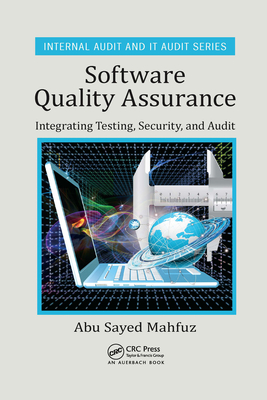相關主題
商品描述
Description:
The creation of quality software on time and within budget has been a major problem facing the software industry for several decades. Consideration of software development and maintenance as an engineering discipline to control the developmental process can help alleviate these obstacles. This new book focuses on the best practices for software process improvement (SPI) and related international standards providing a valuable guide and reference.
The text is a collection of original and republished papers providing a significant survey on the use of SPI and software process assessment (SPA) as practiced by companies such as Lockheed Martin, Siemens, and Hewlett Packard. Among the important features of the book are chapters on software process evaluation, how to best perform SPI, ISO 9000 and TickIT-an alternative approach to SPA, as well as the latest information on the CMM integration project. The text also provides vivid descriptions on the most important international and national standards for SPI, in particular ISO 9001, ISO 9000-3, ISO/IEC 9126. ISO/IEC 15504, ISO/IEC 12207.
Software Process Improvement benefits software managers who want to learn about the requirements and effects of SPI, software process staff who need to understand the mechanisms of SPA and SPI, software developers who are affected by SPI and need to know how to apply it, and college students who want to understand the various methods of SPA and SPI.
Table of Contents:
Contributors of Original Papers.
Foreword by Mark C. Paulk.
Preface.
Chapter 1. Software Process Assessment.
Chapter 2. The Capacity Maturity Model for Software.
Chapter 3. Other Approaches to Software Process Assessment.
Chapter 4. Software Process Improvement: How To Do It.
Chapter 5. Developments Following from the SW-CMM.
Chapter 6. Software Product Evaluation.
Chapter 7. ISO 9000 Series and TickIT.
Chapter 8. The SPICE Project.
Chapter 9. Experiences of Software Process Assessment.
Chapter 10. Software Process Improvement for Small Organizations.
Chapter 11. Benefits of Software Process Improvement.
Chapter 12. Software Process.
Appendix.
Glossary (R.H. and M.C. Thayer).
Editor's Biographies.
商品描述(中文翻譯)
**描述:**
高品質軟體的及時交付和預算內完成一直是軟體產業面臨的主要問題。將軟體開發和維護視為一種工程學科,以控制開發過程,可以幫助緩解這些障礙。本書專注於軟體流程改進(Software Process Improvement, SPI)及相關國際標準的最佳實踐,提供了寶貴的指南和參考。
本書的內容是原創和再版論文的集合,對於如洛克希德·馬丁(Lockheed Martin)、西門子(Siemens)和惠普(Hewlett Packard)等公司在SPI和軟體流程評估(Software Process Assessment, SPA)方面的應用進行了重要的調查。本書的重要特點包括有關軟體流程評估的章節、如何最佳執行SPI、ISO 9000及TickIT—SPA的替代方法,以及有關CMM整合專案的最新資訊。文本還生動描述了SPI最重要的國際和國家標準,特別是ISO 9001、ISO 9000-3、ISO/IEC 9126、ISO/IEC 15504和ISO/IEC 12207。
《軟體流程改進》對於希望了解SPI的要求和影響的軟體經理、需要理解SPA和SPI機制的軟體流程人員、受到SPI影響並需要知道如何應用的軟體開發人員,以及希望了解各種SPA和SPI方法的大學生都具有益處。
**目錄:**
原創論文貢獻者。
馬克·C·保克(Mark C. Paulk)序言。
前言。
第一章:軟體流程評估。
第二章:軟體能力成熟度模型(Capacity Maturity Model for Software)。
第三章:其他軟體流程評估方法。
第四章:軟體流程改進:如何執行。
第五章:SW-CMM後續發展。
第六章:軟體產品評估。
第七章:ISO 9000系列和TickIT。
第八章:SPICE專案。
第九章:軟體流程評估的經驗。
第十章:小型組織的軟體流程改進。
第十一章:軟體流程改進的好處。
第十二章:軟體流程。
附錄。
術語表(R.H.和M.C. Thayer)。
編輯的傳記。































